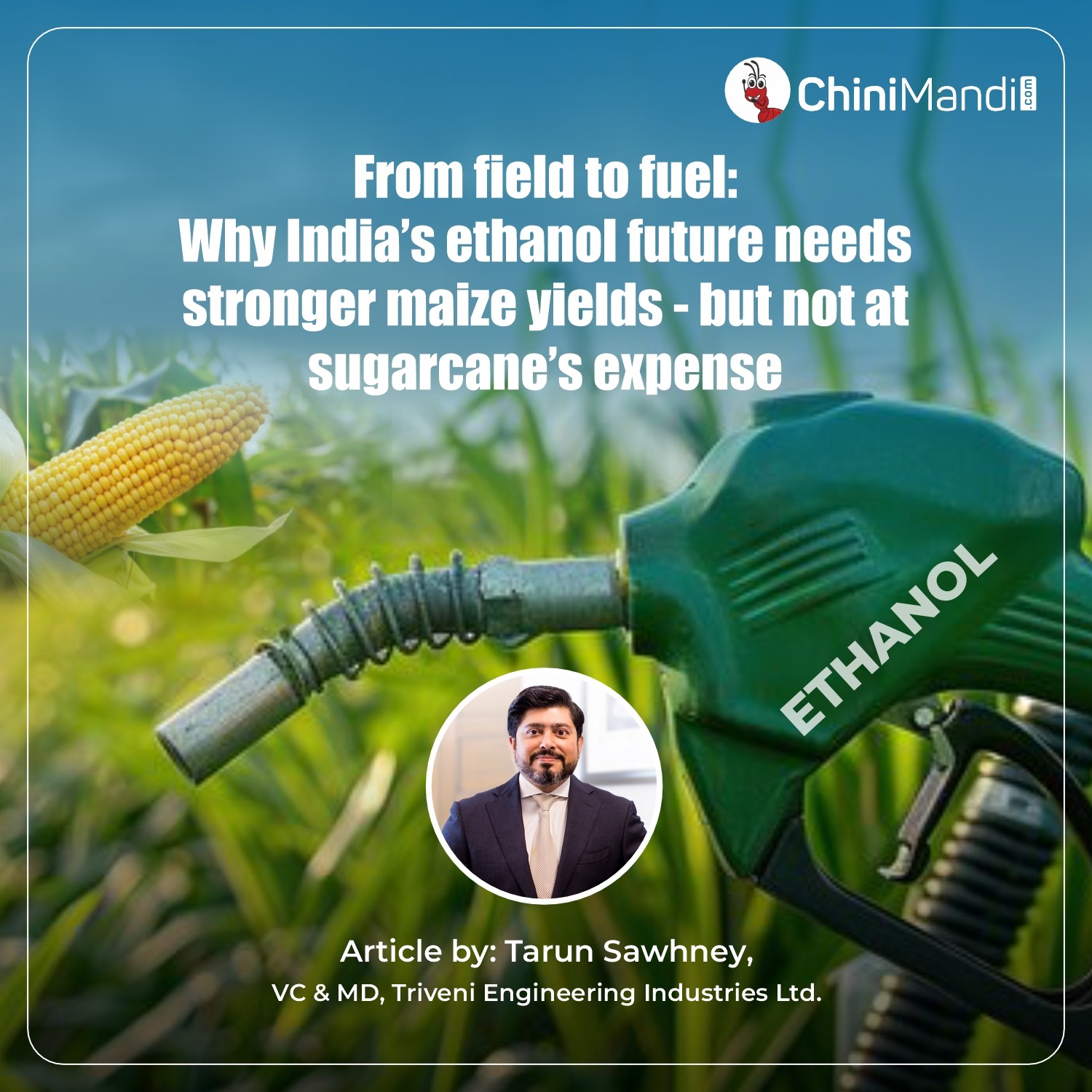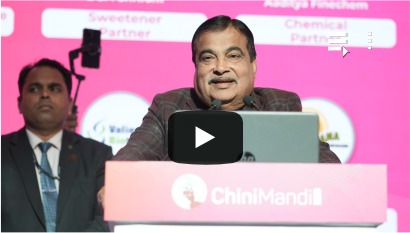India’s Ethanol Blended Petrol (EBP) Programme has evolved from a fuel policy into a far-reaching instrument of rural transformation. Anchored in the sugar sector, the programme has long drawn strength from a reliable, efficient, and farmer-integrated feedstock: sugarcane. India has steadily expanded its ethanol blending, reaching a national average of 19.8% in May 2025—achieving the 20% target ahead of schedule (ESY 2025–26). NITI Aayog is now coordinating an inter-ministerial group to chart the roadmap beyond EBP 20, reaffirming the government’s commitment to the programme.
At Triveni, we’ve witnessed this evolution first-hand. Our sugarcane-based distilleries have played a central role in this journey, supporting both the energy transition and our core stakeholders—farmers. The beauty of sugarcane as a feedstock lies in its circularity: sugar, ethanol, power co-generation, and even bio-compost form a tightly integrated value chain.
But with increasing blending targets, seasonal variations in cane availability, and evolving policy directives, it has become clear that one feedstock alone cannot carry the weight of India’s ethanol ambitions. That’s why the industry has turned to maize – not as a replacement, but as a flexible supplement that can add resilience to ethanol production.
The Growing Role of Maize in Ethanol Production
Over the past few years, maize has rapidly emerged as a viable feedstock among grains for ethanol production. When the National Policy on Biofuels was first implemented in 2018, molasses served as the primary feedstock for ethanol production. Maize wasn’t utilized as a feedstock until the Ethanol Supply Year (ESY) 2021–22. However, in ESY 2022–23, maize contributed around 315 million litres of ethanol. This figure surged to an impressive 2.86 billion litres in ESY 2023–24, a nine-fold increase, accounting for 42% of the nation’s total ethanol output that year
Out of the current ethanol production capacity of 18.1 billion litres, 8.16 billion litres come from sugarcane based feedstock (molasses/juices), 8.58 billion litres from grains, and 1.36 billion litres from dual-feed plants. Recognizing the potential of maize, the industry has invested in setting up grain-based ethanol plants across the country with an estimated annual production capacity of over 7 billion litres.
Supporting Farmer Welfare
The ethanol industry’s rising demand for maize is significantly contributing to farmer welfare. By encouraging the cultivation of a water-efficient crop, it not only supports environmental sustainability but also helps farmers secure better prices—often above the Minimum Support Price (MSP). As ethanol production increasingly relies on maize, farmers across various states are witnessing more stable and improved incomes.
This positive shift is further reinforced by targeted initiatives like the ‘Makka Ugao Campaign,’ which promotes maize cultivation through awareness drives and farmer workshops. Complementing these efforts, the Indian Institute of Maize Research, Ludhiana is spearheading R&D focused on developing high-yielding, high-starch, and climate-resilient maize varieties—enhancing both the productivity and profitability of maize farming in India.
Challenges to Overcome
This shift has brought benefits particularly to farmers in non-sugarcane regions who now find in maize a stable and often better-paying crop, especially with ethanol-linked demand. However, it has also exposed a major bottleneck: India’s maize yields are too low to support long-term ethanol scale-up without distorting other sectors.
At an average of about 3.5 tonnes per hectare, Indian maize yields trail the global average of about 6 tonnes per hectare. Demand is growing at 7% annually, while production trails at 6%. This imbalance has led to ripple effects, including a staggering 7,940% increase in maize imports in 2024 and pressure on the poultry and feed sectors, which rely on maize for 60–70% of their needs.
Way Forward
From an ethanol manufacturer’s perspective, this crystallises a simple insight: diversification must be backed by yield improvement. Without higher maize productivity, ethanol producers will remain exposed to cost shocks and feed-dependent industries will continue to feel the pinch.
Moreover, it is important that we build a robust diversified feedstock basket that is regionally responsive and economically viable. Therefore, to build system-wide resilience, we must invest in raising maize yields through agronomic support, seed innovation, and mechanisation. Additionally, encouraging crop shifts in surplus paddy zones, where maize can flourish and maintaining a clear feedstock allocation policy that prioritise food and feed security can help create a positive ecosystem for maize.
The EBP Programme is at an inflection point. Its success must now be complemented by strategic support for other feedstocks like maize, without undermining the balance between fuel and farmer interest.
At Triveni, we believe the future lies in flexibility backed by productivity—not in replacing one system with another, but in strengthening both. Improving maize yields is not just about ethanol volumes; it’s about building a more stable, equitable, and self-reliant rural economy for years to come.
Mr. Tarun Sawhney is the Vice Chairman and Managing Director at Triveni Engineering & Industries Ltd.


















[…] Source : Chinimandi […]